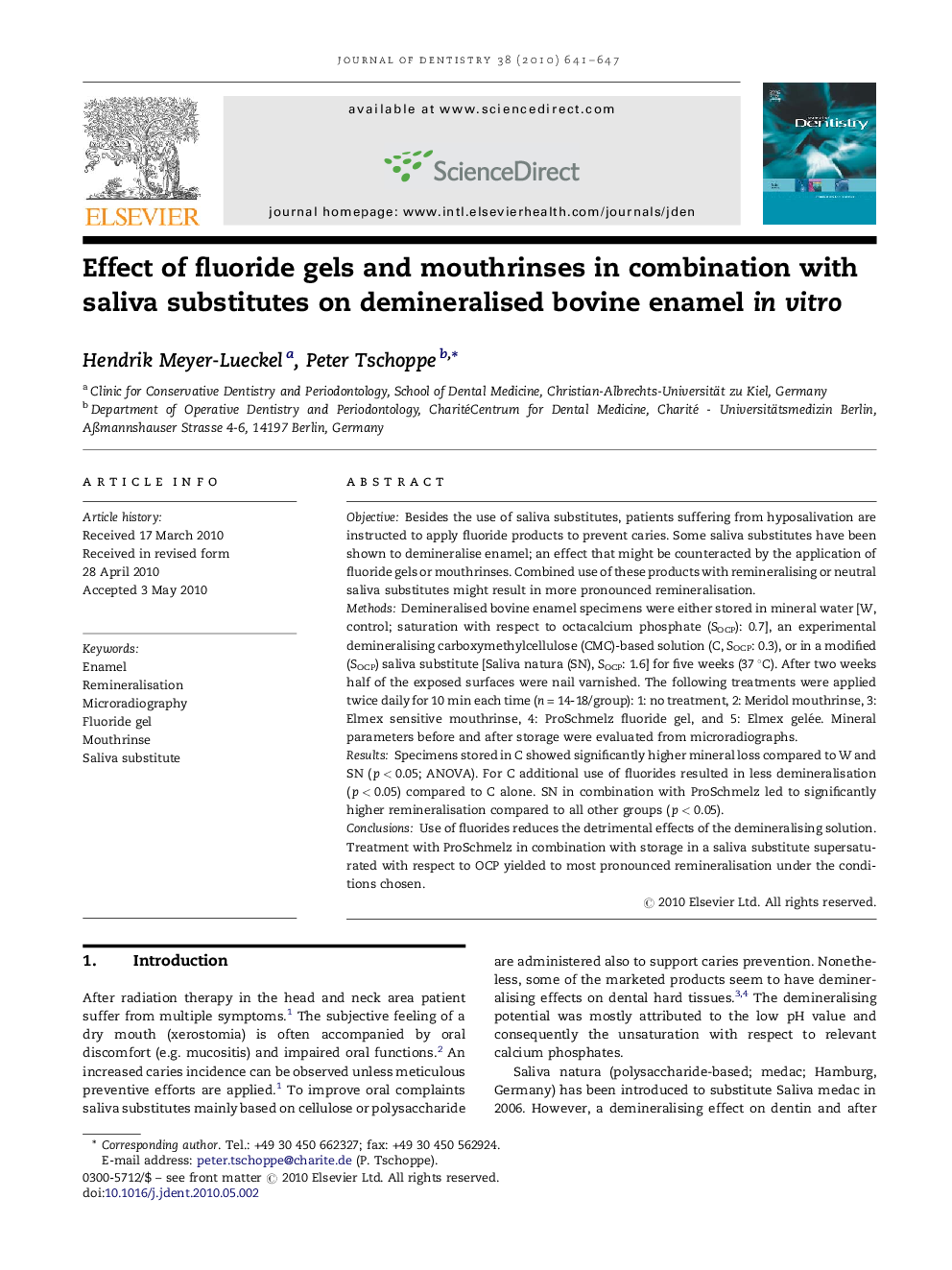| کد مقاله | کد نشریه | سال انتشار | مقاله انگلیسی | نسخه تمام متن |
|---|---|---|---|---|
| 3145275 | 1197062 | 2010 | 7 صفحه PDF | دانلود رایگان |

ObjectiveBesides the use of saliva substitutes, patients suffering from hyposalivation are instructed to apply fluoride products to prevent caries. Some saliva substitutes have been shown to demineralise enamel; an effect that might be counteracted by the application of fluoride gels or mouthrinses. Combined use of these products with remineralising or neutral saliva substitutes might result in more pronounced remineralisation.MethodsDemineralised bovine enamel specimens were either stored in mineral water [W, control; saturation with respect to octacalcium phosphate (SOCP): 0.7], an experimental demineralising carboxymethylcellulose (CMC)-based solution (C, SOCP: 0.3), or in a modified (SOCP) saliva substitute [Saliva natura (SN), SOCP: 1.6] for five weeks (37 °C). After two weeks half of the exposed surfaces were nail varnished. The following treatments were applied twice daily for 10 min each time (n = 14-18/group): 1: no treatment, 2: Meridol mouthrinse, 3: Elmex sensitive mouthrinse, 4: ProSchmelz fluoride gel, and 5: Elmex gelée. Mineral parameters before and after storage were evaluated from microradiographs.ResultsSpecimens stored in C showed significantly higher mineral loss compared to W and SN (p < 0.05; ANOVA). For C additional use of fluorides resulted in less demineralisation (p < 0.05) compared to C alone. SN in combination with ProSchmelz led to significantly higher remineralisation compared to all other groups (p < 0.05).ConclusionsUse of fluorides reduces the detrimental effects of the demineralising solution. Treatment with ProSchmelz in combination with storage in a saliva substitute supersaturated with respect to OCP yielded to most pronounced remineralisation under the conditions chosen.
Journal: Journal of Dentistry - Volume 38, Issue 8, August 2010, Pages 641–647